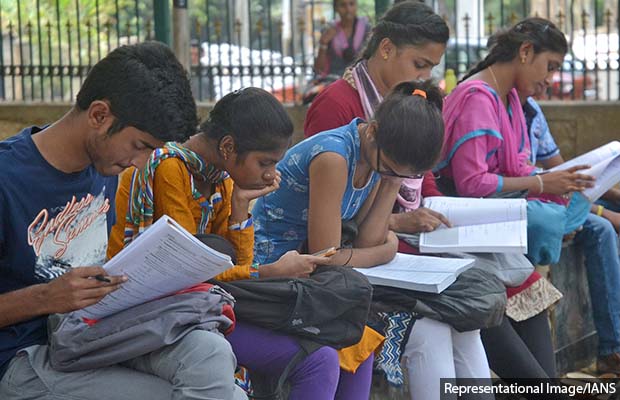Mumbai: More than eight million jobs are required every year for India to keep its employment rate constant, as its working age population (above 15 years) is increasing by 1.3 million every month, a new study has found.

India’s employment rate has been declining due to women leaving the job market, according to a World Bank report, ‘Jobless Growth?’, published on April 15, 2018.
While the male employment rate in India between 2005 and 2015 declined “very little”, the female employment rate declined by nearly 5% per year, data show.
India’s employment rate was 52% in 2015, below Nepal (81%), Maldives (66%), Bhutan (65%) and Bangladesh (60%) but above Pakistan (51%), Sri Lanka (49%) and Afghanistan (48%).
| Employment Rate, Job Requirement | |||
|---|---|---|---|
| Country | Monthly increase in population (15+), 2015-2025 | Employment rate 2015 (or most recent) | Annual job creation needed to keep employment rate constant, 2015-2025 |
| Afghanistan | 64000 | 48 | 366100 |
| Bangladesh | 170000 | 60 | 1213400 |
| Bhutan | 1000 | 65 | 6400 |
| India | 1319000 | 52 | 8214600 |
| Maldives | 1000 | 66 | 4100 |
| Nepal | 35000 | 81 | 338300 |
| Pakistan | 245000 | 51 | 1492000 |
| Sri Lanka | 10000 | 49 | 60400 |
Source: World Bank
Note: Data sourced from Bangladesh 2015/16 LFS; Bhutan 2012 LSS; India 2011/12 NSS-Thick; Pakistan 2015/16 HIICS; Nepal 2011 LSS; and Sri Lanka 2015 LFS. World Development Indicator data are based on modeled ILO estimates. Employment rate in (%).
The working age population, aged 15 and above, across South Asia is expected to increase between 8% and 41% by 2025.
“To reap the benefits of ‘demographic dividend’, sufficient new jobs need to be created,” the report said.
South Asia re-emerged as the world’s fastest growing economy with growth of 6.3% in the last quarter of 2017 and 7.2% in the first quarter of 2018. The region’s growth is attributed to India’s economic resurgence, post the slow down due to demonetisation and implementation of goods and services tax to 7.3% in 2018 (based on forecast). About 80% of South Asia’s gross domestic product is generated in India, the report said.
Growth, however, is not the only factor to achieve higher employment rates enjoyed by other developing nations, particularly among women, the report argued.
“More than 1.8 million young people will reach working age every month in South Asia through 2025, and the good news is that economic growth is creating jobs in the region,” Martin Rama, World Bank South Asia Region Chief Economist said.
“But providing opportunities to these young entrants while attracting more women into the labor market will require generating even more jobs for every point of economic growth.”
The battle for jobs continue
As many as 18.3 million Indians were unemployed in 2017, and unemployment is projected to increase to 18.9 million by 2019, according to The World Employment and Social Outlook–Trends 2018 report by the International Labour Organization, released on January 22, 2018.
There is widespread resentment among youth with lack of employment opportunities in the country.
The situation seems to be grim, considering the number of people applying for government jobs. Over 28 million applicants are expected to appear for 90,000 jobs offered by the Indian Railways this year, The Times of India reported on March 31, 2018.
More than 200,000 candidates were competing for 1,137 police constable vacancies in Mumbai, many of whom were over-qualified: 423 had degrees in engineering, 167 were Masters in Business Administration and 543 were post-graduates while the basic qualification required for the post was pass in 12th standard.
As many as 590,000 jobs every month–or 7 million annually–were likely to be generated in 2017-18, according to a report, Towards A Payroll Reporting in India, published on January 15, 2018.
Prime Minister Narendra Modi had claimed that lies were being spread about lack of jobs quoting new but contested data, FactChecker reported on January 29, 2018.
Over 100,000 jobs in second quarter of 2017-18, double that in first quarter
About 136,000 jobs were added in the July-September quarter of 2017, more than double the number added (64,000 jobs) in the previous (April-June) quarter, Santosh Kumar Gangwar, minister of state (independent charge) for labour and employment, informed the Lok Sabha (lower house of Parliament) in his reply on April 2, 2018 based on the seventh round of quarterly employment survey (QES) report released on March 12, 2018.
The April-June quarter had seen a 65% decline in addition of jobs over January-March 2017 quarter (185,000 jobs).
The QES measures employment across eight major sectors–manufacturing, construction, trade, transport, education, health, accommodation/restaurants and information technology/business process outsourcing. The eight sectors account for 81% of total employment units having 10 or more workers. The report covers 11,000 units across 36 states and union territories.

The manufacturing sector added the most (65%) jobs between July and September 2017, followed by education (15%). Construction was the only sector that saw job losses.
Jobs added during demonetisation period
As many as 122,000 jobs were added during the October-December 2016 quarter that witnessed demonetisation, an increase of over three times (281%) compared to its previous quarter that added 32,000 jobs.
Further, 185,000 jobs were added in the following January-March 2017 quarter, which sustained the demonetisation impact and slowed down the economy, an increase of nearly 52% over the October-December 2016 quarter.
“Human capital is now the fastest-growing component of India’s wealth,” Ejaz Ghani, lead economist at the World Bank wrote in Mint on April 20, 2018.
“Investing in people through healthcare, quality education, jobs and skills helps build human capital, which is key to supporting economic growth, ending extreme poverty, and creating more inclusive societies.”
(Mallapur is an analyst with IndiaSpend.)
Courtesy: India Spend
